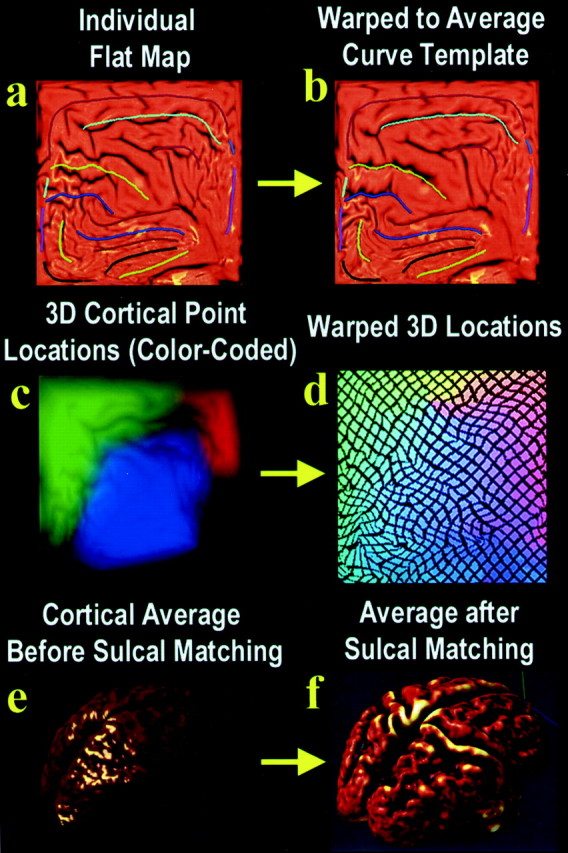Fig. 2.

. Creating 3D average cortical models and maps in elderly populations and those with AD: sulcal matching. The idea behind sulcal matching is to average cortical data from corresponding regions across subjects, accommodating sulcal pattern differences across subjects using an elastic warping process. Briefly, the sulcal curves from all the subjects in the study are flattened, and their shapes are averaged across subjects to make an average set of sulcal curves (a). The sulcal pattern of each individual, as seen in the individual's flattened cortical map (a), differs a little from this average set of curves. A 2D elastic deformation can be applied to an individual's flat map, which drives its features into exact correspondence with the average set of sulcal curves (b). This same deformation can be applied to the color-coded image (c) that stores 3D cortical positions from that individual (see Fig. 1 for an explanation). Images such asc or d can be averaged, pixel by pixel, across all subjects in a group and then decoded to produce a 3D shape. If this is performed before sulcal matching on images such asc, a smooth cortex results (e). It is intriguing that if it is performed on warped color images such asd, a crisp average cortex results, which reinforces group features in their mean anatomic locations (f). This process can create average cortical models for a group of subjects, but it can also transfer cortical data (such as gray matter density information) from many subjects onto a common cortical surface for comparison. In doing so, it accommodates complex differences in cortical patterning across subjects.
